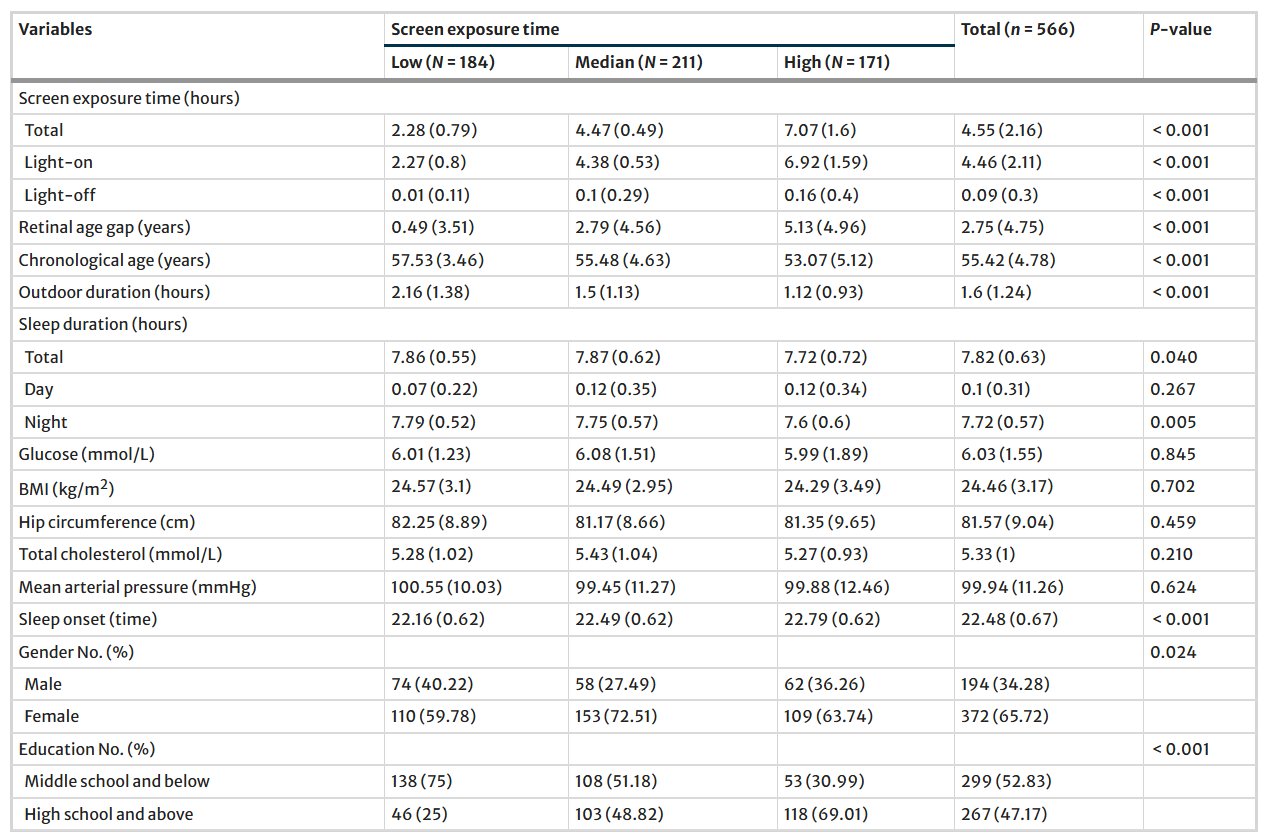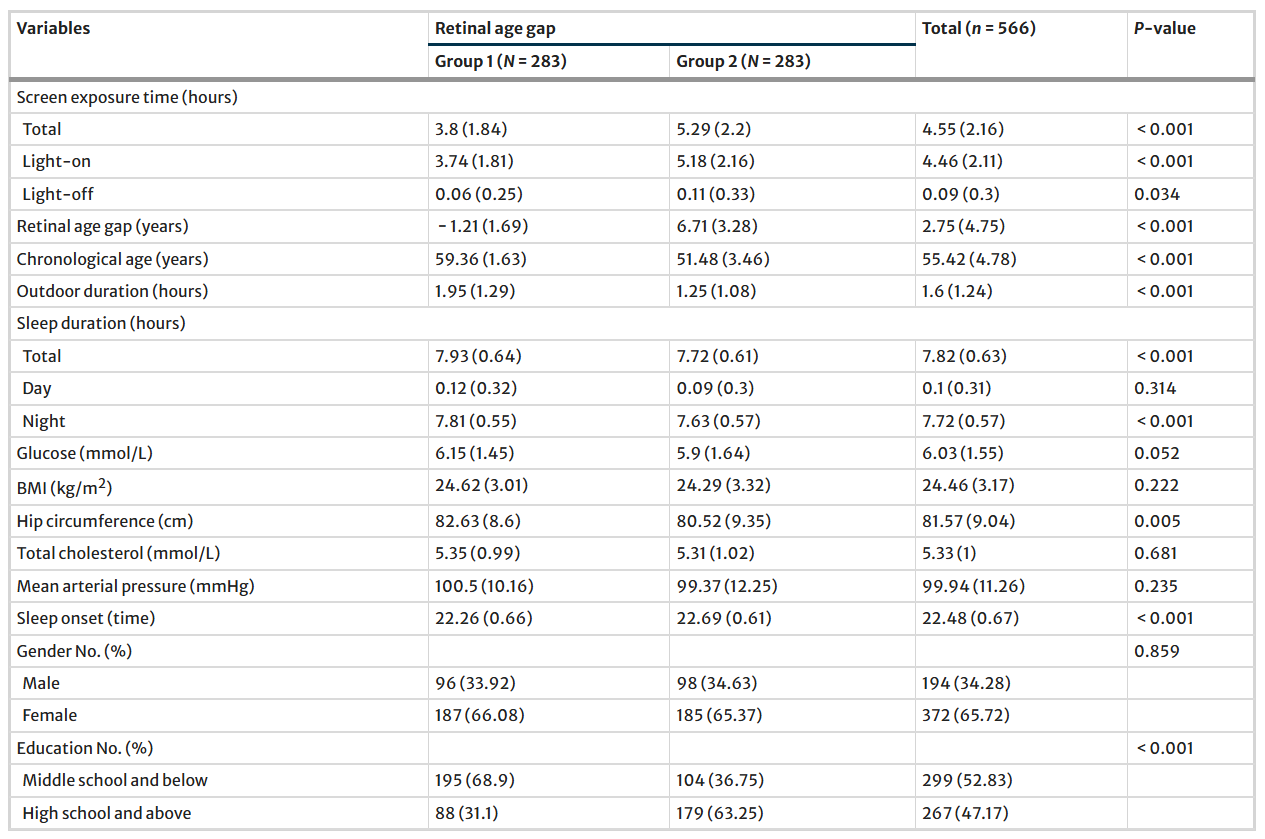The latest research shows:Each additional hour of screen exposure accelerated the retinal age gap by 32 days
Time: Nov 05,2024
A new study by a team of researchers from Shanghai Eye Disease Prevention &Treatment Center/Shanghai Eye Hospital, School of Medicine, Tongji University has found a correlation between excessive screen usage and greater retinal age gap in middle-aged and older adults. 566 healthy working adults over the age of 45 years were recruited to undergo a general and eye examination in Shanghai, China, 2023.
Basic Characteristics of Subjects with Higher Screen Time Usage
Participants in the low group had less than 4 h of screen usage, the median group had 4-5 h, and the high group had more than 5 h. The study showed that the group with longer screen usage were younger, received higher educational level, shorter outdoor time, later sleep onset ( p<0.001), and shorter total sleep duration ( p=0.008).

Table 1 Basic characteristics stratified by tertiles of total screen exposure time
Basic Characteristics of Subjects with Large Retinal Age Gaps
The study showed that the group with larger retinal age gap were younger, received higher educational level, shorter outdoor time, later sleep onset, shorter total and night-time sleep duration (p<0.001), and smaller hip circumference (p=0.005).

Table 2 Basic characteristics stratified by the median value of retinal age gap
Relationship between sleep and screen exposure time and retinal age gap
Table 3 shows that in Models 1 and 2, screen exposure time was linearly associated with retinal age gap. After adjusting for age, gender, education, time spent outdoors, sleep duration, sleep onset time, fasting blood glucose, BMI, hip circumference, total cholesterol, and mean arterial pressure, each 1-hour increase in total screen exposure time was associated with an increase in retinal age gap of 0.087 years (95% CI, 0.027, 0.148, p=0.005)

Table 3 Relationship between screen exposure time and retinal age gap
Table 4 shows that screen usage time shortened sleep time and accelerated aging. Sleep duration was not an intermediate variable between screen usage time and retinal age gap. Sleep onset time mediated the effect of screen usage time on retinal age gap (indirect effect, β = 0.11; 95% CI 0.04 to 0.24), whereas sleep duration did not (indirect effect, β = 0; 95% CI approximately 0.03 to 0.02).

Table 4 Mediation effect of sleep duration and sleep onset time on the association between screen exposure and retinal age gap
Figure 1 shows that longer screen use may delay sleep onset time (β=0.20,95% CI 0.13 to 0.27) and retinal age gap (β=0.57,95% CI 0.21 to 0.93), with an indirect effect of 10.1% (solid orange line matches linear regression; blue dashed line is the 95% confidence limit of linear regression; gray dashed line is the linear regression's 95% prediction limit).

Figure 1 Relationship between screen exposure time, sleep onset time and retinal age gap
Conclusion
In conclusion, for every additional hour of screen exposure, the biological age of the retina will increase by 0.087 years, equivalent to 32 days of aging. Reasonable planning of screen use time and good work and rest habits are the cornerstones of maintaining ocular health, mental state and physiological rhythms of modern people, and have a long-term positive impact on improving quality of life and work efficiency.
Reference :DOI:10.1007/s11357-024-01321-x
Related News


